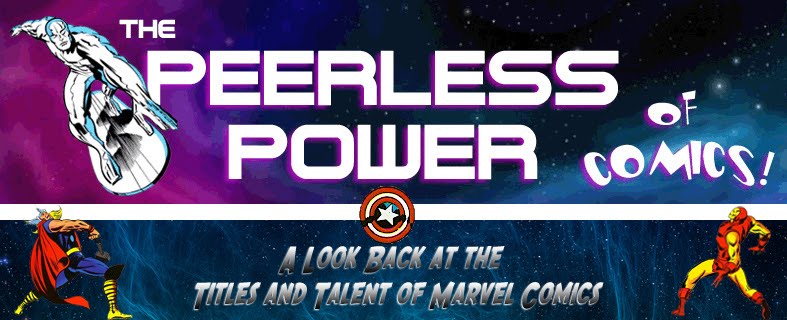Ophelia Sarkissian may not be a name that immediately rings a bell for Marvel readers, but the character has enjoyed a long and prolific career as one of the company's most deadly and recognizable villains, establishing a reputation that precedes her throughout the world and a "rap sheet" that no doubt makes for an eye-opening file in the databases of both Interpol and S.H.I.E.L.D. You likely know her as Viper, gaining her name much the same way as she acquires anything--through the use of deadly force.
While there's no question that the original Viper was dangerous in his own right, his successor has an edge on him not only in sheer violence but also the fact that her dedication to nihilism is ultimately the driving force of her actions.
Yet in spite of Viper's longevity and greater notoriety as a character, I still wonder at times why Madame Hydra, her original role, wasn't given the same amount of attention and was quickly abandoned. It's hard to pin the blame on the organizations that each was originally affiliated with--Hydra, despite its broader reach and resources, arguably isn't that much of an improvement over the Serpent Squad in terms of story draw, and each had their fair share of stories featuring conflicts with Captain America. My layman's guess is that Madame Hydra was scripted very two-dimensionally by Stan Lee, though Lee and artist Jim Steranko at least made an effort to explore her character in the early days.
The full-page shot of Madame Hydra addressing the troops doesn't make for a bad pin-up, thanks to all the trimmings that Steranko and Lee provide at first glance: We have Madame Hydra herself, imperious and commanding; we're privy to the Hydra oath in its entirety; we're shown the Hydra emblem in the background; and naturally we're witness to the unfortunate Hydra minion who receives the ultimate penalty for his failure. (The Warrant of Death is a new one on me--if someone announces that you're being handed something called the Warrant of Death, what person in their right mind reaches out to take it?)
Yet Madame Hydra's claim to fame wasn't even of her doing, but rather the unwilling part she played in the master plan of the Space Phantom, part of which involved targeting Captain America on behalf of the Grim Reaper:
While logic suggests that there is only one person acting as the "Supreme Hydra," it's also reasonable to assume that there are subordinates who take charge of Hydra's cells around the world and report directly to the S.H. We learn later that there are other Madame Hydras leading their own contingents (one is featured in the 1988 Nick Fury vs. S.H.I.E.L.D. mini-series)--yet it's interesting that there doesn't seem to be a male counterpart for the position with his own title. (Maybe just "Leader"? "Mr." or "Monsieur Hydra" comes off as silly, even for a comic book.)
The death of Madame Hydra that the Phantom speaks of takes place during the culmination of a plan meant to destroy Cap, the Avengers, and Nick Fury. Yet as we know, it's difficult to declare Captain America dead and turn out to be right about it--and when he and Rick Jones turn the tables on her, it's Madame Hydra herself who sows the seeds (or hunter missiles, in this case) of her own destruction.
The panel which the Phantom's recap indicates was the moment in which he replaced Madame Hydra would be where she yells to her hordes to destroy Cap and Rick--which later makes the Phantom a pretty good actor at the point where "Madame Hydra" later appears earnest in admitting her own failure and launches the missiles. It's anyone's guess how the Phantom escaped death from the unexpected missile impact on "his" own position, though it's reasonable to assume he'd have more resources to escape the blast than Madame Hydra would have.
As for Madame Hydra, she returns from Limbo fairly soon afterward, with the Phantom relocating to a Hydra base underneath a gutted tenement on the lower east side of Manhattan and switching bodies once more to replace the Supreme Hydra in order to continue with his plan. Once freed from Limbo, it takes awhile for Madame Hydra to resurface, the circumstances of which she explains to her new subordinates in the Serpent Squad--a meeting where it's fair to again wonder aloud why the Cobra's power makes him such a reputed threat.
Obviously the Viper isn't worried any longer about Hydra looking her up and taking vengeance against her.
For what it's worth, we learn a little more of Madame Hydra's origin through a 2010 flashback featured in the Secret Warriors series, though its focus is obviously on the Viper and her untimely end--"end" being a rather fluid word in the Marvel universe.
And of course there's nothing like confronting your murderer after your death.
Hail, Madame Hydra--a Viper in a nest of serpents.




















































